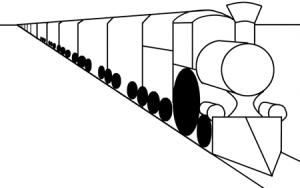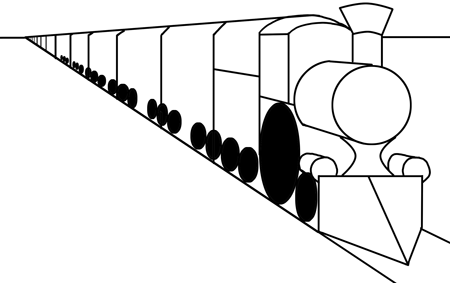

How to draw a train realisticĭraw a straight line as a guideline for the train.ĭraw a long oval on the right side of the paper, and above to it a angeled straight line. You’ll learn how to draw faster and how to draw things that are more structurally sound. Start with drawing a thick upper lip and then form the shape of the lip.

This fall / spring scene is really easy to draw and i'll show you how to draw it right now in simple steps.ĭraw a straight line as a guideline for the train. Learn to draw such a realistic ostrich head is a simple thing, suitable for elementary school students. At the stop of this article, we wish that you will have plenty instruction approximately how to draw a train realistic so that you can adopt it as a basis for making current and afterforward decisions. Starting from opinion about how to draw a train realistic and some sampling of illustration very nearly it. In this note, we'll cover everything you want on how to draw a train realistic. Our website frequently gives you hints for viewing the maximum quality video and picture content, please kindly surf, and locate more informative video articles and images that fit your interests. Now, if you look, the internet is filled with images of two-point and three-point perspective sketches labeled as one-point perspective.When you want to looking for how to draw a train realistic pictures opinion related to your topic, you have pay a visit to the right blog. They use the same pictures from the handbooks, redraw or copy them, and pass them along with incorrect explanations. The true problem arises when these artists start teaching others. They're practicing, so no harm's done to make a mistake, especially when this mistake is not obvious. The artists who have misunderstood the sketch would then draw incorrect cubes. They're not, but the difference is hardly visible from the first glance (and you saw this earlier when we redrew that blue cube).Īll this leads some artists to assume that the handbook's author is talking about a one-point perspective since only one point is evident. When you place the second vanishing point far away from the first one, the lines will seem parallel. In turn, this may cause some readers, who skim over the page and don't take the time to read everything, to misunderstand.

Therefore, the author does not draw everything and does not remind you of the existence of every single vanishing point. The author assumes that you now understood the basic concepts of perspective. This is especially the case when you read the advanced parts of the handbook. So, the "unnecessary" vanishing points are often omitted. This situation frequently happens in interior design. In a case when you're looking at a cube, you will see the sidewalls of the cub.Īnother example of use: facing the corner of a room. This linear perspective is used when you are facing the angle of an object. Both of them will be placed on the horizon line. The two-point perspective has two vanishing points. You want a nice, strong, properly-built house. If you have a bad foundation, your house will be shaky. Perspective is complicated enough and doesn't need any further complications that will arise if you read a badly-written tutorial. I'm stressing this because I see pictures on the internet misrepresenting perspective. One-point perspective = "frontal" perspective. So, what you need to understand is that if the sidewalls of a cube are visible, it means that you're looking at an angle. You will see the lower part of the object if it is below your eye level. You will see the upper part of the object if the object is above your eye level. It’s used in cases when the object is turned one specific side to us. All the parallel lines of your drawing are going to meet in that vanishing point. The main distinction of a one-point linear perspective is that it will have a single vanishing point, and it will be placed on the line of the horizon. The drawing that we've just made is classified as the "One-point Linear Perspective". There are three types of linear perspective - one-point, two-point and three-point. As we've established before, the horizon line is the imaginary line that is right in front of your eye level. Remark: Please take into account that in the image above, the horizon line coincides with the true horizon (the boundary between the sky and the ground). The point where these (in reality) parallel lines meet, will be placed on the horizon line.


 0 kommentar(er)
0 kommentar(er)
